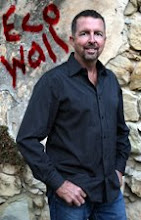EcoWall: Sorry to hear about losing your home, Debbie. The silver lining is that your next "green" home will not only be more efficient to operate, but it won’t cost much more to build green. You’ll be doing your part now towards reducing pollution and, down the road, your energy bills will be a lot less.
Good for the planet. Good for Santa Barbara. Good for you.
The quick answer to your question is this: Hire an architect or construction firm that is a member of the US Green Building Council and has a LEED accredited professional on staff. But there’s much more back story to tell… so let’s jump right in!
Green Beginnings. Since the birth of the environmental movement, right here in Santa Barbara back in 1969, there have been hundreds of green organizations in the US. Many have delivered excellent results. And many builders are utilizing green building practices in their construction every day.
But when it comes to the nation attacking the worst wasters, it would be wise to take on the worst pollution culprit. No, it’s not the automobile -- it’s buildings.
According to the World Business Council for Sustainable Development (WBCSD), buildings consume 40% of the nation’s total energy. The U.S. Green Building Council’s (USGBC) website reports that buildings in the US use 72% the nation’s annual electricity. Plus the built environment has a huge affect on many other hidden aspects of our lives.
The Reality. The problem is many building professionals are misinformed about their role in the solution. Check out this WBCSD article dated April 15, 2008: “The WBCSD’s Energy Efficiency in Buildings (EEB) project commissioned interviews with 1,423 such professionals in eight countries – developed and developing – from late 2006 through early 2007. Asked what percentage of CO2 emissions do you think buildings give rise to, participants responded, on average, 19% – less than half the correct answer. Responses from US professionals averaged 12%.”
The memo that building professionals and homebuilders need to get is that they are either contributing to the problem or part of the solution. Only a new awareness coupled with a drastic change in behavior will result in substantial energy and emissions reduction.
The Myth. Diehard, old-school contractors will tell you, “Sure, lady… I can build you a green home, but it’s gonna cost you twice as much!” But that’s simply not the case. The same WBCSD report asked builders, “How much more do you think a certified sustainable building would cost to build relative to a normal building.” The average response worldwide was “17% more in cost.” In fact, the additional cost is usually less than 5% in developed countries.
Maybe the most telling statistic of all was that only 13% of the respondents had ever been involved in the building of a green building! But that’s all changing with President Barack, you and me.
Building Boom? Despite the nation’s financial crisis there is a green boom going on. Ever since the 1990s, American retailers and consumers have been making the switch to more efficient and less polluting appliances and practices. The annual U.S. market in green building products and services is doubling at a rapid pace – worth over $7 billion in 2005 – today it’s over $12 billion.
But real change needs to come from the people like us – homeowners, home buyers, designers, builders, and even those who are out pounding the nails. We all have a role.
Taking the LEED. Truly, one of the brightest stars in the green building movement started in 1993 when the USGBC was founded. The USGBC was created to focus the building and construction industry on high-performance green building. Today, it includes more than 17,846 member companies and organizations. In the past five years USGBC’s membership has quadrupled.
The non-profit organization is composed of leaders from across the building industry working to advance buildings that are environmentally responsible, profitable and healthy places to live and work. It’s USGBC’s vision to make a change quickly, too. According to their
The program that will make this change come about is LEED certification, which stands for Leadership in Energy and Environmental Design. LEED provides a rating for buildings based on human and environmental health, sustainable site development, water savings, energy efficiency, materials selection and indoor environmental quality. Nationally, more than 4.2 billion square feet of building space are currently involved with the LEED program.
In future EcoWall blogs we’ll discuss what LEED is, how it works, and what it accomplishes. For example, homeowners living in completed LEED certified residences today are saving upwards of $12,000 a year in utility bills. Now that’s thinking green.
Next time: A chat with former local USGBC Chapter President Michael Holliday, discussing the LEED projects that are underway in Santa Barbara County.
EcoWall EnergyTip: Switch out your standard light bulbs to energy efficient Compact Fluorescent Light bulbs and use 75% less electricity. In places that require night time lighting for safety and security use daylight sensors and motion detectors.
EcoWall WebTip: The Mountain Drive Community Association (MDCA) has an excellent website devoted to Tea Fire victims and supports. Check it out HERE.
(When submitting an EcoWall question please include your occupation and neighborhood.)
